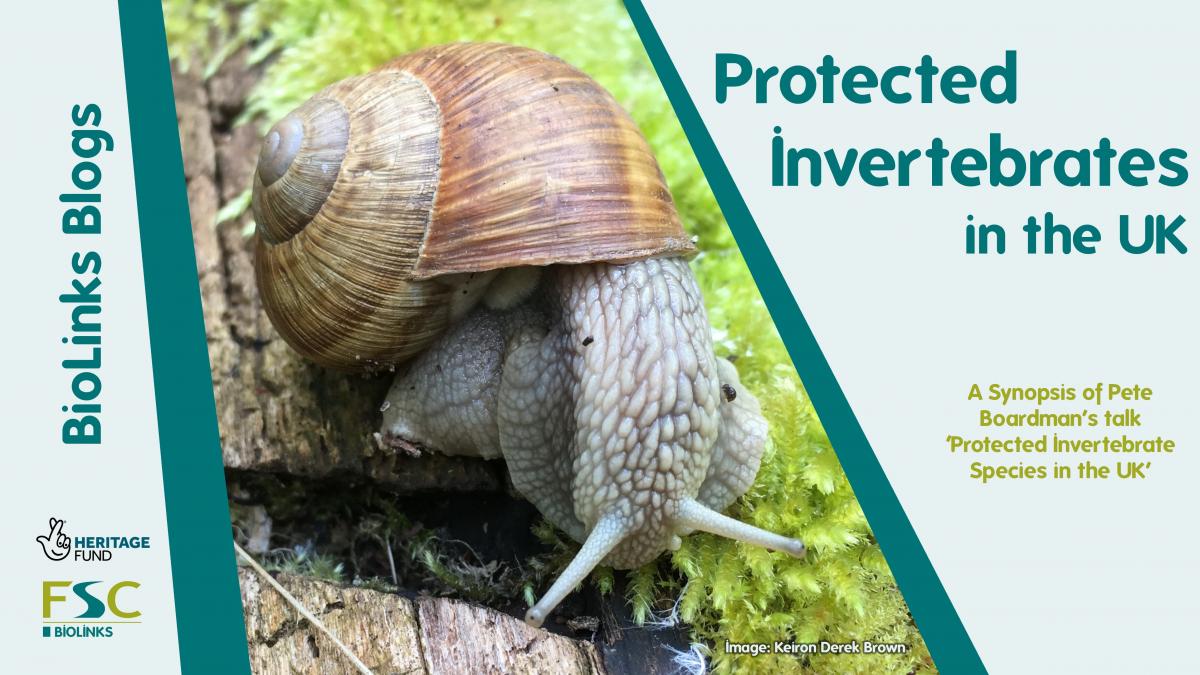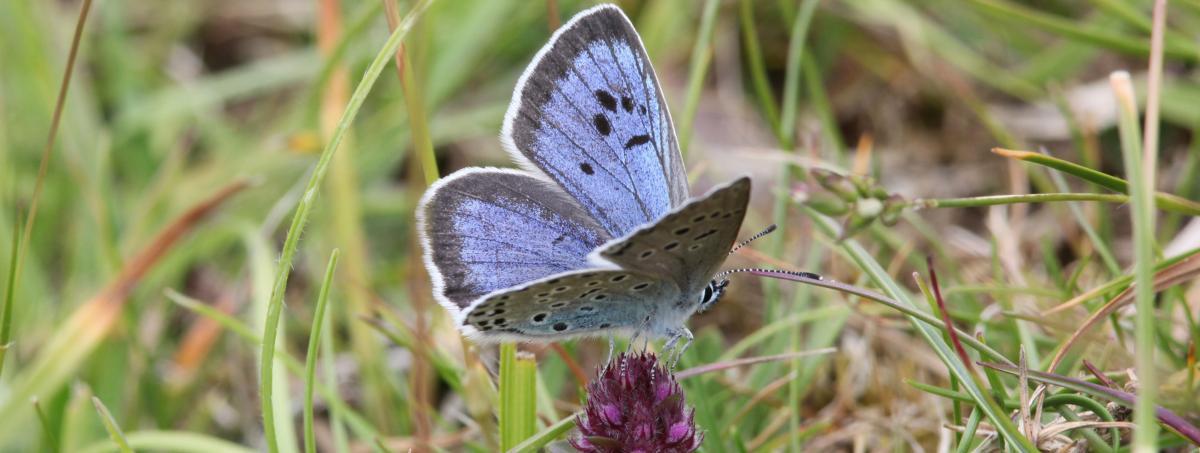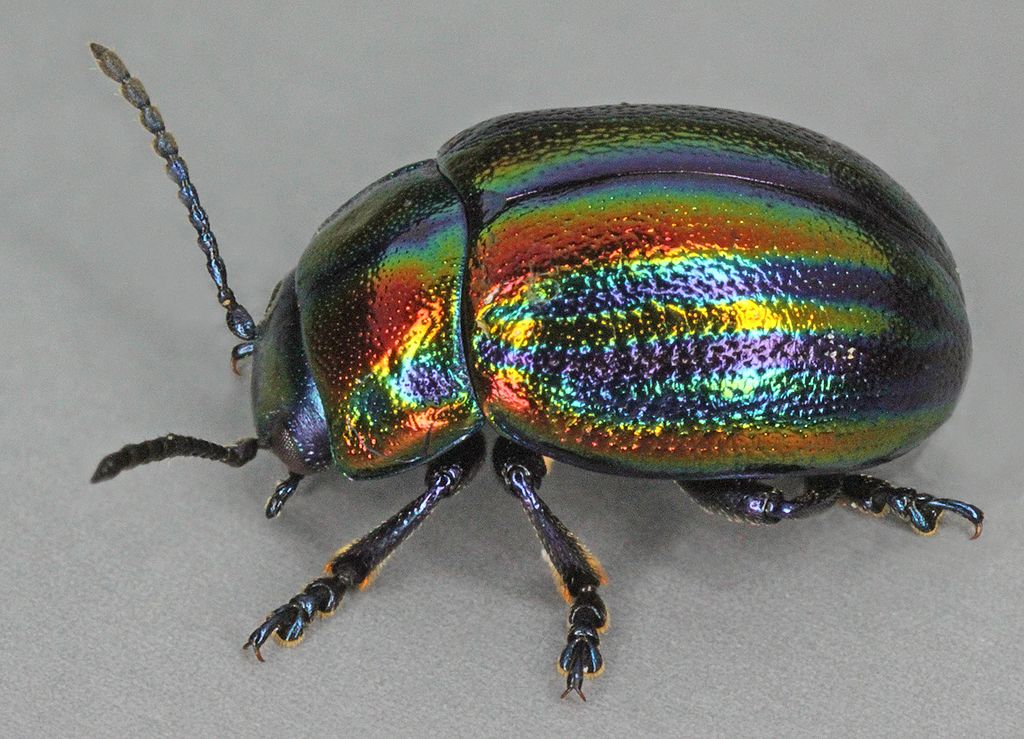Protected Invertebrates In The UK

Throughout this blog, we will delve into the legislation and guidelines that protect the UK's invertebrate fauna and our responsibilities to ensure their conservation.
Why Protect Invertebrates?
Invertebrates are essential for healthy functioning ecosystems, as they help recycle nutrients, pollinate our flowers and feed our mammals and birds. Plus, they provide a whole host of other services, but that's a topic for another day...
Unfortunately, studies have shown a decline in many invertebrate species over the last few decades. The 2019 State of Nature Report revealed that since 1970 in the UK, butterfly numbers have decreased by 17%, alongside moths reducing by 25%. Similar trends have also been seen for carabids, bees and hoverflies.
Some species have fared notably worse than others, and some have been rare for a long time, such as the Large Blue Butterfly, which first became protected in 1975. The good news is that due to detailed study we know more about the life history of Large Blue and its detailed ecology than we used to, and re-introductions are more likely to be successful than they were previously, most notable at some sites within the Cotswolds.

Legislation in Great Britain
The first piece of modern legislation was 'The Conservation of Wild Animals and Plants Act', which became law in 1975. This was later replaced by 'The Wildlife and Countryside Act 1981', which is still in place today, although this has seen many changes throughout its time.
The Wildlife and Countryside Act 1981 is in place to protect our habitats and the animals and plants within them. It covers everything from protecting species, assigning public rights of way and the control of non-native species. Schedule 5 details all the invertebrates that are protected in Great Britain, and this means that it is an offence to:
- Kill, injure, or take the animal from the wild
- Possess the species (dead or alive)
- Damage or destroy any structure used by that species for shelter and protection. Plus, obstruction of its use or disturbing the animal.
- Trading, advertising or selling the species, dead, alive or any derivatives.
What Species Are Protected?
'The Wildlife and Countryside Act 1981' has an extensive list of animals it protects, including a long list of invertebrates. The species included ranges across different taxa, with some listed below:
- Rainbow Leaf Beetle (Chrysolina cerealis)
- Large Copper (Lycaena dispar)
- Mole Cricket (Gryllotalpa gryllotalpa)
- Norfolk Hawker (Aeshna isosceles)
- Glutinous Snail (Myxas glutinosa)
- Fiery Clearwing (Bembecia chrysidiformis)
- Ladybird Spider (Eresus sandaliatus)
All of these examples above have 'Full Protection'; however, this may not be the case for all invertebrates as some species may only have part of the protection applied.
Buglife have a great summary document about protected invertebrates here.
When looking at protected invertebrates, it is essential to remember that this legislation can change over time and that there is more than just The Wildlife and Countryside Act of 1981. Watch the talk below by Pete Boardman, who will discuss other legislation and guidelines for protected invertebrates in the UK.

Chrysolina cerealis (Janet Graham, CC BY 2.0 via Wikimedia Commons)
Protected Invertebrate Species in the UK - By Pete Boardman
Pete Boardman has been involved in entomology professionally for a couple of decades and is a Fellow of the Royal Entomological Society. He co-runs the UK Cranefly Recording Scheme, the oldest UK fly recording scheme. He currently works for Natural England but previously ran biological recording and entomological projects for the Field Studies Council. He has taught entomology and led workshops for a range of organisations over the last twenty years. He once saw a slug eating a chip.
Pete joined us to run through some of the different legislation that protects invertebrates and discusses some of the protected species – including some very fussy moths! Following on from the video, we have the answers to your questions and some helpful resources.
Q & A with Pete Boardman
How do I find the Shropshire Entomology Newsletter?
The first ten are here. More recent ones can be found here.
Can a species be added to the 1981 Wildlife and Countryside Act at any time? And how is the decision made to include a species in/on this Act?
Generally, additions and deletions occur within the Quinquennial Review (QQR) process via JNCC and inter-agency partners.
The habitat requirements for the Fisher's Estuarine moth are very specific - do you think this habitat can be maintained naturally, or will the population always need to be managed through the conservation program?
Presumably, if you go back far enough, the Fisher's Estuarine moth must have survived with very little human input for hundreds of thousands of years. But in the modern world, with the degree of human impacts, I would imagine it (and plenty of other species) will require conservation for prolonged survival.
Where can I find the Status Reviews from Natural England?
On the Natural England website here.
Why was the Large Marsh grasshopper included on the BAP list but not on the 1981 Wildlife and Countryside Act?
All W&C Act 1981 species were BAP species but not all BAP species were on the W&C Act. The BAP process added new species to take to the list, including the Large Marsh grasshopper. For example, the 3x Lipsothrix craneflies (L. errans, L. nigrostigma, L. nervosa) were added to the BAP list based upon the perceived threat to the habitat that they occur in, but they were never given formal protection under the W&C Act.
You mentioned that there isn't the level of species recording needed for rare species. Does this result in many rare species going unmonitored? As site owners/managers, is there anything we can do to help without having the specialist knowledge needed to monitor rare species, for example, can we monitor habitat conditions rather than species or something similar?
Yes, the simple fact is most rare species go unmonitored. It is only when some funding becomes available (see Back to the Brink for examples), or an imminent threat is recognised (see horrid ground weaver spider) that these species get surveyed. There is a list of craneflies that need urgently to be surveyed, particularly in England and Scotland. Still, these will rely largely on recorders going and searching for them off their own back rather than a coordinated, properly funded initiative. This will be the same with hundreds of other invertebrate species.
Moth trapping seemed to have become more popular in 2020, with more people being at home. Did you see an increase in records for craneflies that come to light during 2020?
Yes, I think so. Before 2020 the CRS got on average about 3000 records per year via iRecord (Cranefly Recording Scheme No. 35), but in 2020 this went up to 4688 (Cranefly Recording Scheme No.36). It isn't as clear-cut as there is often a lag of records each year, but more people were recording at light, judging by photos submitted and Twitter queries to the Cranefly Recording Scheme account.
If I catch craneflies as by-catch in my moth trap, where is the best place to send photographs to for identification? And what photos would be needed for positive identification?
You can submit via iRecord with a photo or via Cranefly Recording Scheme Twitter @CRStipula
Is it predominantly butterflies that are at risk of illegal collecting?
I would suspect so, yes. There will be other species that attract people to collect them illegally, but probably at much lower levels, as butterflies are showy creatures with a very keen following.
Useful Resources
- Section 41
- Site Management Guidance from Buglife
- Guardian Article on Illegal Capture of the Large Blue
- The Conservation (Natural Habitats, &c.) Regulations 1994
- The Conservation of Habitats and Species Regulations 2017
- The UK Biodiversity Action Plan (UK BAP): 1992-2012
- Conserving Biodiversity – The UK Approach 2007
- UK Post-2010 Biodiversity Framework (2012)
- Natural Environment and Rural Communities Act 2006
- Environment (Wales) Act 2016
- Nature Conservation (Scotland) Act 2004
- Wildlife and Natural Environment Act (Northern Ireland) 2011
- IUCN Redlist Invertebrates
- IUCN Red List
- Olivia Watts's blog
- Log in or register to post comments


